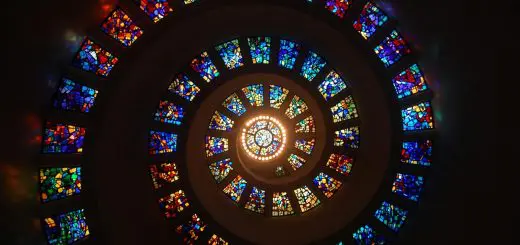The Roman Templum: Sacred Architecture in Rome

Looking for more amazing products? Check out our online store and explore our collection here! Happy shopping!
Before diving in, please note: This post is for informational purposes only. If you’d like to know more about how we approach topics, feel free to check out our friendly Disclaimer Page.
Hey there, amazing readers! 
We’re committed to delivering quality posts, and your support (even just sticking around despite the ads) means everything to us. So, bear with us, and thanks for helping us keep the good vibes rolling. Now, on to the fun stuff!
TRANSLATE BUTTON AT THE END OF THE ARTICLE
Introduction: The Roman Templum in Rome
The Roman Templum, also known as a temple, is an iconic feature of ancient Roman architecture.
Templums were sacred structures dedicated to various deities and played a significant role in ancient Roman society.
These temples served as places of worship, where individuals could offer prayers and sacrifices to the gods and goddesses of the Roman pantheon.
The design, construction, and purpose of these temples were deeply rooted in Roman religious beliefs and rituals, making them an integral part of the city’s cultural and architectural heritage.
Origins: Tracing the Roots of Sacred Architecture
The origins of Roman templums can be traced back to the Etruscan civilization, which heavily influenced early Roman culture.
The Etruscans believed in the presence of divine forces in nature and constructed sacred areas where they could communicate with the gods.
The Romans adopted this concept and incorporated it into their own religious practices.
The templums built by the Romans were influenced by Greek architecture as well, which they encountered through their contact with Greek colonies in southern Italy.
Design: Characteristics of Roman Templum Structures
Roman templums were typically constructed on a raised platform and surrounded by a colonnade.
The most common design was the rectangular shape with a front entrance and a porch supported by columns.
These columns were often of the Ionic or Corinthian order, showcasing the influence of Greek architecture.
The interior of the templum housed a cella, which was the main sacred space where the statue of the deity was placed.
The cella was usually accessible only to the priests and priestesses, while the general public gathered in the open-air spaces of the templum.
Construction: Techniques and Materials Used
The construction of Roman templums involved intricate engineering techniques and the use of various durable materials.
The foundations were laid using a combination of stone and concrete, which provided stability to the structure.
The columns were made of stone or marble and were carefully carved to achieve the desired architectural style.
The roof of the templum was often made of terracotta tiles, which were lightweight and resistant to weathering.
The walls were constructed using blocks of stone, which were meticulously cut and fitted together to create a seamless appearance.
Purpose: Function and Importance of Roman Templums
Roman templums served as the focal points of religious activities in ancient Rome.
They were dedicated to specific gods and goddesses, such as Jupiter, Juno, Venus, and Mars, among others.
The temples were believed to be the dwelling places of these deities, and people would visit them to seek divine favor, guidance, and protection.
The templums also played a crucial role in the political and social life of the city, as they were often used for public gatherings, ceremonies, and official announcements.
They represented the connection between the mortal world and the divine realm, making them essential to the Roman religious and cultural identity.
Locations: Notable Templums in the City of Rome
The city of Rome was adorned with numerous templums, each dedicated to a specific deity.
One of the most famous and well-preserved templums is the Temple of Venus and Rome, located on the Velian Hill.
This massive structure was built during the reign of Emperor Hadrian and honored the goddesses Venus and Roma.
Another notable templum is the Temple of Saturn, situated in the Roman Forum.
This ancient temple was dedicated to the god Saturn and was renowned for its iconic Ionic columns.
The Temple of Jupiter Optimus Maximus, located on the Capitoline Hill, was the most important temple in ancient Rome and served as the spiritual center of the city.
Gods and Goddesses: Deities Worshipped in Templums
Roman templums were dedicated to various gods and goddesses, reflecting the rich and diverse religious beliefs of the Romans.
Explore the Path to Spirituality and Enlightenment – Start Here.
Some of the most revered deities in the Roman pantheon included Jupiter, the king of the gods, Juno, the goddess of marriage and childbirth, Venus, the goddess of love and beauty, Mars, the god of war, and Minerva, the goddess of wisdom.
Each templum was dedicated to a specific deity, and the rituals and ceremonies conducted within the temple were centered around honoring and appeasing that particular god or goddess.
Rituals: Practices and Ceremonies within Templums
The rituals and ceremonies conducted within Roman templums were an integral part of the religious practices of ancient Rome.
These rituals varied depending on the deity being worshipped but often involved offerings of food, wine, and incense.
Prayers were offered to the gods and goddesses, and priests and priestesses performed sacred rites on behalf of the community.
Animal sacrifices were also common, particularly during important festivals and ceremonies.
The Romans believed that these rituals ensured the favor and protection of the gods, and failure to perform them correctly could lead to divine anger and misfortune.
Symbolism: The Meaning behind Roman Templum Design
The design of Roman templums was rich in symbolism and reflected the religious beliefs and values of the Roman people.
The raised platform on which the temple was built symbolized the separation between the mortal and divine realms.
The columns represented the connection between heaven and earth, acting as a bridge for communication with the gods.
The front entrance and porch of the temple were considered sacred thresholds, marking the transition from the secular world to the divine space within.
The statues of the deities housed in the cella were seen as physical representations of the gods, allowing worshippers to interact with them directly.
Influence: Impact of Templums on Roman Architecture
The construction of templums had a profound influence on Roman architecture as a whole.
The use of durable materials, such as concrete and stone, laid the foundation for the development of monumental structures, such as amphitheaters and basilicas.
The design principles of the templums, such as the use of columns and the incorporation of open-air spaces, were adopted and adapted in various architectural styles throughout the Roman Empire.
The templums also influenced the religious architecture of subsequent civilizations, particularly in the Western world, where temples dedicated to gods and goddesses continue to be built.
Preservation: Efforts to Protect and Restore Templums
The preservation of Roman templums is of utmost importance in maintaining the cultural heritage of Rome.
Numerous organizations, including the Italian government, archaeological institutes, and cultural heritage institutions, are actively involved in the protection and restoration of these ancient structures.
The temples are carefully studied using archaeological techniques to understand their original design and construction.
Conservation efforts involve stabilizing the foundations, reinforcing the structures, and protecting the temples from environmental factors such as erosion and pollution.
These preservation efforts ensure that future generations can appreciate and learn from these magnificent examples of Roman architecture.
Legacy: Roman Templums in Modern Society
The legacy of Roman templums can be seen in various aspects of modern society.
The architectural principles, such as the use of columns and the incorporation of open spaces, continue to inspire contemporary architects and designers.
The concept of a sacred space dedicated to worship and religious ceremonies is also prevalent in many religions around the world.
The influence of Roman templums can be observed in the design of churches, mosques, and temples in different cultures.
Furthermore, the study of Roman templums provides valuable insights into the religious and cultural practices of ancient Rome, enhancing our understanding of this fascinating civilization.
Conclusion
The Roman Templum, with its rich history, intricate design, and religious significance, remains an important part of Rome’s cultural and architectural heritage.
These sacred structures served as places of worship, where the Romans sought divine favor and communicated with their gods.
The construction techniques and materials used in the templums influenced the development of Roman architecture as a whole, leaving a lasting impact on subsequent civilizations.
Efforts to preserve and protect these ancient structures ensure that their legacy continues to be appreciated and studied by future generations.
The Roman templums stand as a testament to the skill, creativity, and spiritual beliefs of the ancient Romans, offering a fascinating glimpse into the world of ancient Rome and its enduring architectural legacy.

The Enlightenment Journey is a remarkable collection of writings authored by a distinguished group of experts in the fields of spirituality, new age, and esoteric knowledge.
This anthology features a diverse assembly of well-experienced authors who bring their profound insights and credible perspectives to the forefront.
Each contributor possesses a wealth of knowledge and wisdom, making them authorities in their respective domains.
Together, they offer readers a transformative journey into the realms of spiritual growth, self-discovery, and esoteric enlightenment.
The Enlightenment Journey is a testament to the collective expertise of these luminaries, providing readers with a rich tapestry of ideas and information to illuminate their spiritual path.
Our Diverse Expertise
While our primary focus is on spirituality and esotericism, we are equally passionate about exploring a wide range of other topics and niches 

To ensure we provide the most accurate and valuable insights, we collaborate with trusted experts in their respective domains 
Our blog originally focused on spirituality and metaphysics, but we’ve since expanded to cover a wide range of niches. Don’t worry—we continue to publish a lot of articles on spirituality! Frequently visit our blog to explore our diverse content and stay tuned for more insightful reads.
Hey there, amazing reader! 
Check out our store here and take a peek at some of our featured products below! Thanks for being awesome!















